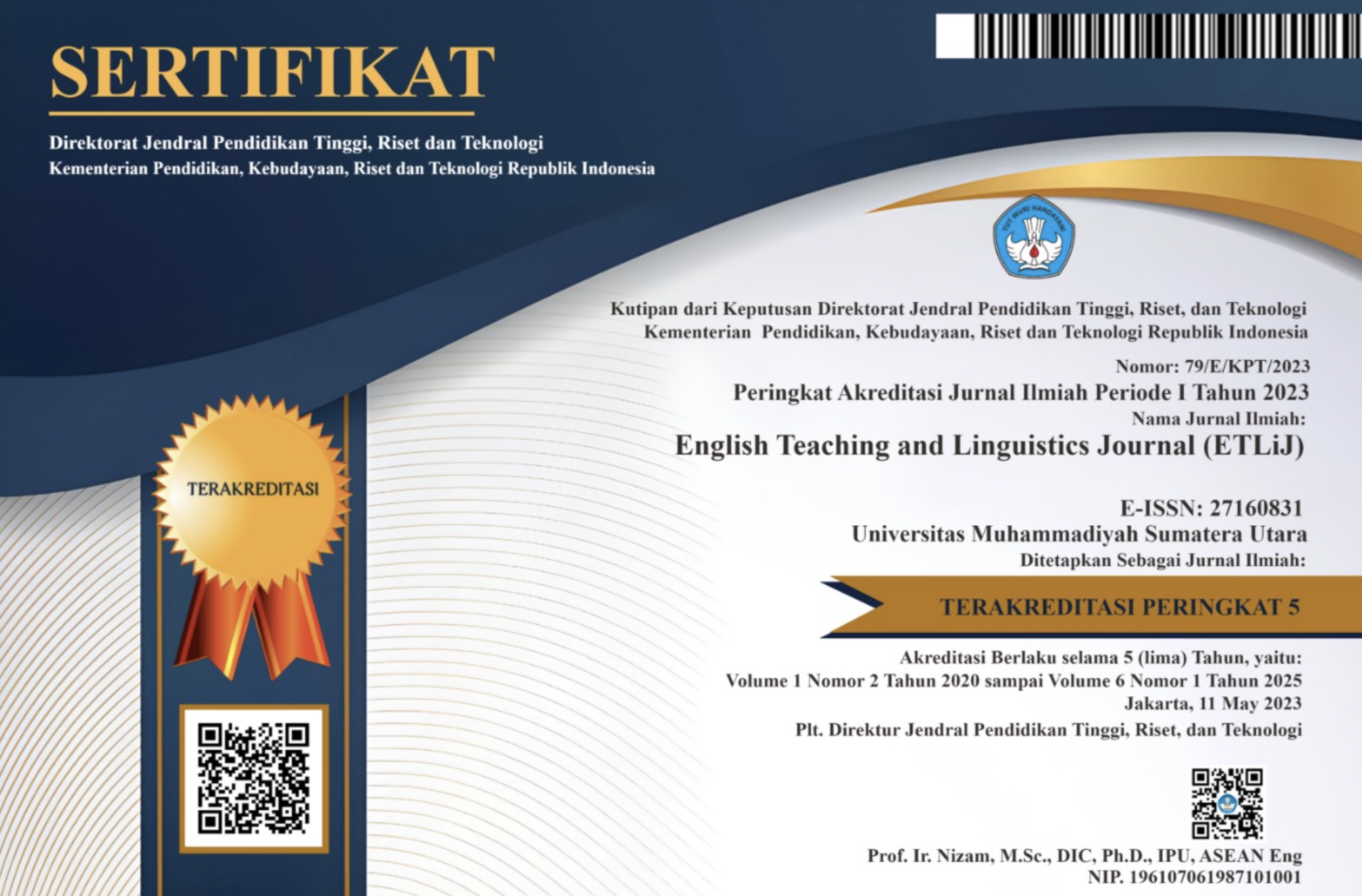Politeness Strategy to Potray Positive and Negative Face Responses in Vladimir Putin’ Speech on “The Reason Why Russian Attacked Ukraine”
Abstract
Keywords
Full Text:
PDFReferences
Astia, I. (2020). Politeness Strategy in Interlanguage Pragmatics of Complaints by International Students . Indonesian Journal of English Language Teaching and Applied Linguistics, 350.
Bousfield, D. (2008). Impoliteness in Interaction. Amsterdam/Philadelphia: John Benjamins.
Brown, P., & Levinson, S. (1987). Politeness: Some iniversal in language usage. New York USA: Cambrige University press.
Brown, P., & Levinson, S. (1987). Politeness: Some iniversal in language usage. New York USA: Cambrige University press.
Chovanec, J., & Dynel, M. (2015). Researching interactional forms and participant structure in public and social media. In Dynel, M., & Chovanec, J. (Eds.),. Amsterdam, Netherlands: Jhon Benjamin Publishing Co.
Creswell, J. W. (1998). Qualitative Inquiry and Research Design: Choosing among Five Traditions. USA: Sage Publications, Inc.
Culpeper, J. (1996). Towards an anatomy of impoliteness. Journal of Pragmatics, 349 - 367.
Fitriyani, s., & Andriyanti, E. (2020). Teacher and Students’ Politeness Strategies in EFL Classroom Interactions. Indonesian Journal of English Language Teaching and Applied Linguistics, 262.
Gleason, J. B., & Ratner, N. B. (1998). Psycholinguistics. (2nd ed). USA. America : Harcourt, Inc.
Goffman, E. (1955). On Face-Work: An Analysis of Ritual Elements in Social Interaction. Psychiatry, 18, 213 - 231.
Goffman, E. (1967). On facework: an analysis of ritual elements in social interaction. London: Routledge.
Grice, H. P. (1975). Logic and conversation in Cole. In J. (. P. & Morgan, Syntax and Semantics (pp. 41-58). New York: Academic Press.
Herman. (2016). Students’ Difficulties in Pronouncing the English Labiodental Sounds. . Communication and Linguistics Studies, 2(1), 1-5.
Holtgraves, T. M. (2002). Language as social action: Social psychology and language use. Erlbaum.
Kharisma, A. J. (2023). IMPOLITENESS IN THE E-NEWS SOCIAL MEDIA COMMENT SECTION: A DESCRIPTIVE STUDY. Language and Education Journal Undiksha, 6(1), 43-47.
Kingwell, M. (1993). Is it rational to be polite? The Journal of Philosophy, 90(8), 387 - 404.
McMillan, J. H., & Schumacher, S. (1993). Research in education: A conceptual understanding. . New York: HaprerCollins.
Pasaribu, B. H., & Hutahaean, D. T. (2020). Students’ Difficulties in Translating Narrative Text from English into Indonesia at Grade VIII of SMP Negeri 9 Pematangsiantar. Journal of Teaching and Education, 2(1), 71-81.
Sondang, M., & Juniati, H. (2015). "An Analysis on Teachers’ Politeness Strategy and Student’s Compliance in Teaching Learning Process at SD Negeri 024184 BinjaiTimurBinjai –North Sumatra-Indonesia". Canadian Center of Science and Education, English Language Teaching Vol. 8, No. 8.
Wardhaugh, R. (1992). An Introduction to Sociolinguistics. Australia: Blackwell Publishing .
Wierzbicka, A. (2003). Cross-Cultural Pragmatics: The Semantics of Human Interaction. In Language (Vol. 72).
Yule, G. (1996). Pragmatics. Oxford: Oxford University Press. .
Yule, G. (1998). Pragmatics. Oxford: Oxford University Press.
DOI: https://doi.org/10.30596/etlij.v4i2.16923
Refbacks
- There are currently no refbacks.

This work is licensed under a Creative Commons Attribution 3.0 License
ISSN: 2716-0831





